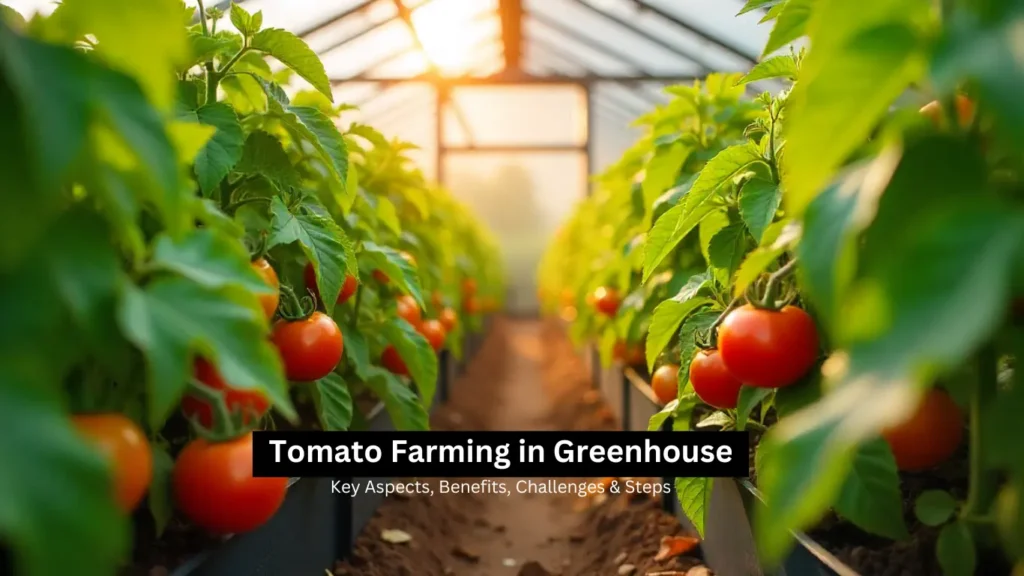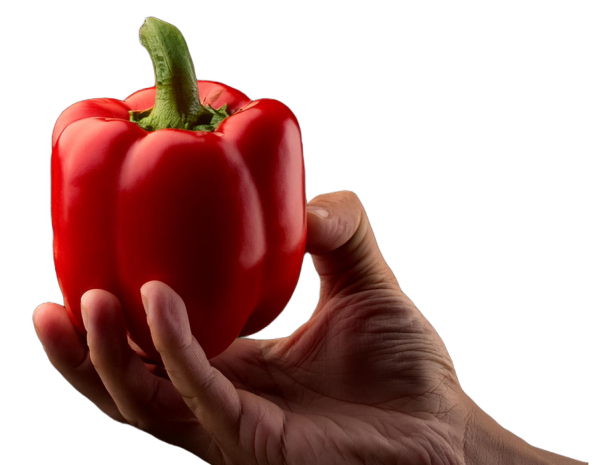
Greenhouse tomato farming enables higher yields, consistent quality, and efficient use of resources but also demands a high initial investment and skilled management for success
FAQs
How long do tomatoes take to grow in a greenhouse?
Can tomatoes be grown in a greenhouse?
How much tomatoes will a greenhouse produce?
Tomatoes are Canada’s go-to, eh—think fresh-picked beauties for a BLT in Regina or a chunky sauce in Moncton. But outdoor growing in Canada’s nutty weather? It’s like betting on a Leafs Stanley Cup win—dicey at best. That’s where Tomato Farming in Greenhouse swoops in, letting growers pop out juicy reds all year, whether it’s snowing like mad in Winnipeg or raining buckets in Tofino. CoirMedia’s got the gear to make it happen, with their tomato grow bag, vegetable grow bag, and horticulture grow bag stuffed with eco-friendly coco coir to keep plants chugging along. This blog’s gonna unpack the whole deal on Tomato Farming in Greenhouse, what makes it tick, the sweet perks, the tough bits, and a step-by-step to nail it, plus answers to questions folks always ask.
Greenhouse tomato farming’s like building a cozy little bubble for plants—no frost, no hail, no crazy heat waves messing things up. From a dinky backyard setup in PEI to a massive operation in Ontario’s tomato heartland, Leamington, Tomato Farming in Greenhouse gives growers the reins to tweak everything—temp, humidity, light—to churn out tomatoes that are straight-up gorgeous. CoirMedia’s grow bags make it a cinch, giving plants a sustainable, clean home that maxes out space and pumps up growth. Here’s the lowdown on what makes tomato cultivation in a greenhouse hum.
Growing tomatoes in a greenhouse ain’t like chucking seeds in the backyard and praying for rain. It’s a bit of a science, a bit of a hustle. Here’s the stuff growers gotta lock down for cultivation of tomato in polyhouse:
Tomatoes are fussy, eh? They want daytime temps sitting pretty between 64–80°F (18–27°C), dropping to 54–64°F (12–18°C) at night. Humidity’s gotta hover around 60–70% to keep plants happy without mold crashing the party. Light’s huge—tomatoes love it bright, so greenhouses in dim spots like Quebec City or Whitehorse might need grow lights to keep things rocking through those long, dark winters.
Tomatoes need a spot that drains like a champ and’s loaded with nutrients, pH sitting between 6.0 and 6.8. Regular soil’s fine, but lots of folks go soilless—perlite, pine bark, Rockwool—for extra control. CoirMedia’s vegetable grow bag is a gem, packed with coco coir that sucks up water like a Tim Hortons cup but lets roots breathe easy. Clean, weed-free, it makes tomato production in greenhouse setups a breeze.
Jam tomatoes too close, and it’s trouble—weak plants, lousy yields, the works. Each plant needs 3.5–5 square feet to stretch out. String ‘em up with trellises or twine to keep ‘em growing skyward, saving space and making picking less of a chore. Snip those suckers—y’know, the little shoots popping up between branches—and try “leaning” (gently lowering plants as they grow) to keep fruit coming longer.
Not every tomato’s built for the greenhouse life. Go for varieties bred for it—disease-resistant hybrids that laugh off powdery mildew and love steady conditions. Right picks mean more tomatoes, less fuss.
Greenhouses block some pests, but they’re not a sealed vault. High humidity can turn ‘em into a fungal or bacterial playground if growers aren’t careful. Integrated pest management (IPM) is the way—sticky traps, ladybugs munching aphids, predatory mites taking out whiteflies. Regular peeks keep issues from blowing up without drowning crops in sprays.
Tomatoes are thirsty but hate wet socks. Drip irrigation’s the ticket, keeping leaves dry to dodge disease. Check soil regularly to balance nutrients, nitrogen for leaves, phosphorus for roots, and potassium for fruit. CoirMedia’s horticulture grow bag is a beaut, holding water and nutrients so growers aren’t playing chemist all day.
So, why bother with tomato cultivation in a greenhouse? ‘Cause the payoffs are sweeter than a PEI strawberry, especially in Canada’s wild climate. Here’s the deal:
Greenhouses keep the tomato party going 365 days, even when it’s minus 40 in Saskatoon or raining like heck in Vancouver. Steady supply for markets, restaurants, or your table, keeps shelves full and prices from going nutty.
Controlled setups spit out tomatoes that are pure eye candy—uniform, juicy, perfect for farmers’ markets in Fredericton or grocers in Toronto. Yields can hit 150% higher than outdoor fields, thanks to dialed-in light, water, and nutrients. That’s a pile of extra tomatoes for the hustle.
Greenhouses act like a bouncer, keeping out a ton of pests and diseases that wreck outdoor crops. Means less pesticide, which is awesome for the planet and folks wanting cleaner eats. Starting with a tomato grow bag from CoirMedia gives plants a clean, disease-free kickoff.
Precision watering and feeding cut waste to zilch. Water and nutrients hit plants right where they need ‘em, saving loonies and doing right by the environment. In dry spots like Alberta’s prairies, that’s worth its weight in maple syrup.
Canada’s weather’s a rollercoaster—hail in Calgary, wind in St. John’s, soggy springs in Ontario. Greenhouses keep tomatoes safe from this nonsense, so crops don’t get trashed by a bad storm. Grow with confidence, eh.
It ain’t all Timbits and hockey; tomato production in a greenhouse has some rough patches. Knowing these helps growers dodge the muck.
Building a greenhouse isn’t as cheap as poutine. The structure, plus heaters, coolers, and lights, can set folks back a ton. For small growers or hobbyists in places like Manitoba, that upfront hit’s a tough one.
Greenhouses need constant babysitting—tweaking temps, checking humidity, watering, pruning, pollinating, eyeing pests or diseases. Ain’t like outdoor fields where nature picks up some slack. This grind can wear folks out without extra hands.
High humidity can make greenhouses a fungal or bacterial hotspot blight, powdery mildew, you name it, if ventilation’s off. Growers gotta stay sharp to keep diseases from taking over.
Tomato Farming in Greenhouse ain’t just planting and waiting. It’s juggling climate controls, nutrient mixes, pest tricks. Newbies or folks without tech smarts might find it a head-scratcher.
Keeping a greenhouse at the right temp and light chews up power. Heating in winter, cooling in summer, running grow lights—bills can pile up, especially in cold spots like Quebec or Yukon.
Ready to grow tomatoes that’d make Nonna proud? Here’s a step-by-step for rocking cultivation of tomato in a polyhouse in Canada.
Pick a greenhouse that fits the climate and budget. A hoop house might do in balmy spots like BC’s Okanagan, but colder places like Saskatchewan need insulated setups with killer heating. Get climate gear sorted—heaters, fans, humidifiers, lights—to keep things steady. CoirMedia’s tomato grow bag is a solid start, packed with coco coir for a clean, green base.
Kick off with seeds in trays or cubes with peat or soilless stuff like coco coir. Keep roots toasty at 84°F with heating mats, especially in chilly months. Strong seedlings are the secret sauce for a bumper crop, so don’t rush it.
When seedlings hit 4–6 inches with a few true leaves, they’re good to go. Harden ‘em off by easing them into the greenhouse vibe, a week or so of adjusting to light and temp changes toughens them up.
Space plants 16 inches apart in rows, 5 feet between rows for breathing room. Train ‘em up with trellises or twine to save space, make picking easy. A vegetable grow bag from CoirMedia keeps things neat, roots happy.
Keep temps, humidity, soil pH in the sweet spot (64–80°F day, 54–64°F night, 60–70% humidity, pH 6.0–6.8). Max out light with clear panels or grow lights, but toss up shade cloth if summer heat’s too wild. Prune suckers, old leaves to focus on fruit; use leaning tricks to stretch production. Watch for pests, diseases—hit ‘em quick with IPM like sticky traps, predatory bugs.
Water steady, drip irrigation’s best to keep leaves dry, dodge disease. Test soil often for nutrient balance, nitrogen for leaves, phosphorus for roots, potassium for fruit. CoirMedia’s horticulture grow bag holds water, nutrients like a pro, cuts the guesswork.
Greenhouses can be bee-free zones, so growers gotta step in. Gently shake flower clusters or use fans to move pollen. Key for fruit set, so don’t slack here.
Harvest when tomatoes are ripe for max flavor, shelf life. Plan marketing early—hook up with markets, restaurants, grocers to move fresh stuff fast. Canadians love local eats, so greenhouse tomatoes sell like Timbits on a Saturday.
From seed to ripe fruit, figure 60–80 days, depending on variety, setup. Seedlings take 4–6 weeks to hit transplant size, then 6–8 weeks for ripe tomatoes. Dialed-in light, water, and nutrients speed it up.
Heck yeah! Greenhouses are tomato paradise, shielding ‘em from Canada’s wild weather—Maritime storms, Prairie frosts. With tools like CoirMedia’s tomato grow bag, growers can pump out healthy plants year-round.
Yields depend, but a tight greenhouse can crank 20–40 pounds per plant per season, smoking outdoor fields. Variety, spacing, and care matter; a vegetable grow bag can push yields to the top end.
Tomato Farming in Greenhouse is a no-brainer for Canadian growers looking to dodge weather chaos and produce top-shelf tomatoes. CoirMedia’s tomato grow bag, vegetable grow bag, and horticulture grow bag make setting up a killer growing environment a snap. Year-round crops, bigger yields, greener practices, perks are tough to beat, even if startup costs and daily hustle take grit. For anyone ready to master tomato cultivation in greenhouse setups, CoirMedia’s got the tools to make it pop.

Mathew is a product designer and engineer at Coirmedia, where he combines his passion for sustainability with his design and engineering expertise. He develops innovative coir products that are not only functional but also eco-friendly. Driven by a desire to share his knowledge, Neil is passionate about writing and teaching, aiming to educate others about his ideas, innovations, and the technology behind them.


CoirMedia (UK) Pvt. Ltd
85 Great Portland Street,
First Floor, London,
United Kingdom





